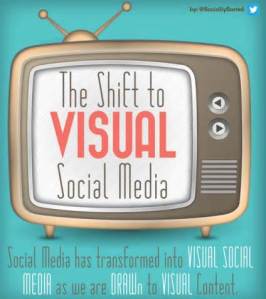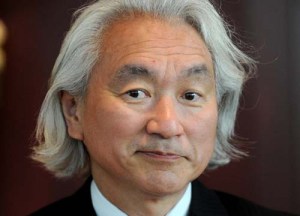What’s the one area where you want to see improvement in 2014?
What’s the one area where you want to see your team/staff/organization improve over the coming year? Weigh in on the poll below:

Putting It All Together (originally appeared on Kathy Robinson’s Blog: http://www.kathyrobinsonsblog.com/what-does-teamwork-mean-to-you/)
What I learned when the president of Cinnabon bought me coffee at Starbucks
I had the opportunity to interview Kat Cole, President of Cinnabon, at the ASAE Annual Meeting in Atlanta earlier this month. I had first become aware of Kat through the CBS show Undercover Boss with the episode featuring her last fall. I was excited to learn a few months ago that Kat would be at this conference and reached out to her through Twitter to arrange this interview.
In the interview Kat touches on a number of topics, but the one I find most fascinating is her deft handling of partnerships. She has worked with major brands like Kellogg, Burger King, and Taco Bell to expand the reach of Cinnabon without taking away from the core business of the franchises. Kat also touched on some of this in her presentation. Her perspective certainly challenges association and nonprofit leaders to consider more thoroughly who they might partner with to create win-win situations.
I walked with Kat from our interview to the auditorium where she would present later that afternoon. As we passed a Starbucks, Kat asked if she could buy me a coffee. What do you say when the head of a major food brand asks if they can buy you an iconic product from another major food brand? You say yes. When you’re also a blogger, you also think, Hey, this could make a really great title for a future blog post! It should be further noted that Kat was impressed with my selection of a tall Java Chip Frappuccino® Blended Beverage… coffee with rich mocha-flavored sauce blended with milk, chocolaty chips and ice. Topped with sweetened whipped cream and chocolate-flavored drizzle. Ah, but I digress. We walked on. I told Kat that I like how playful she can be with the brand on Twitter when people talk about how they can’t resist Cinnabon or how they’ll have to work out more after indulging. Her response: “We’re not building missiles.”
Some of the takeaways from Kat’s session at ASAE Annual:
- Protect the core. Reinvest in what makes you great.
- Leverage something you’re the best at. @Cinnabon did it w/ @Kelloggs_US w/ their cinnamon.
- Be honest about what you can’t do well. Decide if you’re okay with that.
- Culture eats strategy for lunch every day.
- Be humbly bold.
- What is small enough to change, big enough to matter?
- The deal you don’t do is never the one that’s going to kill you.
- What’s the opportunity cost with the limited resources you have?
- What is the one thing we could do today that everything after it will be more effective?
- Be there for your community when it really counts. Are you there for your constituents?
- Be one IN a million … Not one OF a million!
- Guess what? @Cinnabon is not healthy.
- The biggest mistakes are people mistakes.
Believe me, there are some thought-provoking gems here, and Kat’s presentation was well-received. I couldn’t do it justice in even a short blog post. Make no mistake- I found Kat to be approachable and personable in the interview, off camera, and in her presentation, but she is also a focused and determined businesswoman who has not lost touch with her values or who she is. Kat purposely cares for and connects with people, and this comes across genuinely. She furthers her authenticity by being thankful for opportunities, giving credit to others, and admitting mistakes. Many leaders could learn from her approach and her example.
Engage Your Audience like Dove Does
With over 54 million views in two months, Dove has a winner in this Real Beauty Sketches video series.
I’m not here to argue the merits of the campaign with regard to beauty. In my opinion, however, they’ve struck a chord with the general public. The result is a winning content marketing strategy. They’ve challenged people with how they look at themselves and managed to attach their brand to the process.
I think what they’ve also been able to do is intrigue and the engage the audience. From the moment Gil Zamora announces that he is a forensic artist and that he worked for the San Jose Police Department, the viewer is hooked. From the music selection to the loft gallery feel, there’s a calming and inviting sense about the setting. As participants enter, there’s a mystery surrounding the process and what exactly this has to to do with Dove. As they describe their experience further, one can’t help but think what it would be like to be in their position.
We each have difficulty in seeing ourselves for who we are. We may be too critical with small areas. This exercise allowed some to see themselves in a brief but tangible way through the eyes of a stranger. We each come away wanting to know what that moment of realization must be like.
What are the lessons you see from Dove’s Real Beauty Sketches series? What are the ways your organization can use content to better engage your employees, members, and customers? What are the topics or trends in your industry that your brand could be more effectively associated with?
Facial Recognition and the Future of Personalized Marketing
A Face in the Crowd: Say goodbye to anonymity
Recently, I saw the report above from Lesley Stahl on 60 Minutes. She made the point that facial recognition is becoming a reality for marketers. It’s no longer Big Brother that we have to worry about but social sites like Facebook which has more photos of people than the government does. The piece also highlights redpepper, an ad agency that has developed Facedeals.
Here’s the way they say it works:
“Facial recognition cameras are installed at local businesses. These cameras recognize your face when you pass by, then check you in at the location. Simultaneously, your smartphone notifies you of a customized deal based on your Like history.”
This could be scary stuff, but it also left me thinking… What are the implications for associations and nonprofits? What is the applicability of this technology for conferences and events?
What are you seeing? Please share your thoughts with me below or on Twitter or Facebook.
The Greatest of Great Ideas in Less Than 180 Seconds- #ideas13
I had the privilege of attending the ASAE Great Ideas Conference in Colorado Springs at The Broadmoor March 10-12, 2013. I was certainly not in a position to capture all that was happening at this inspiring conference. My hope is that if you attended this will serve as a reminder of the material covered in the sessions. Also, may this post and the notes, tweets, photos, and resources below provide you with enough insight that you too will be challenged to think differently about the challenges you and your organization face.
Conference Catalyst, Thom Singer
- This is not a junior high dance. Ask questions. Power in the word, “Hello.”
- #1 reason that people attend conferences: networking. But then we stink at it. Smile. Have name tag visible.
- Invest in people. Anything you need… it’s probably somebody’s 1st cousin who holds the answer.
- Plan while at the conference how you will follow up with people you meet.
Opening General Session: The Fascination Advantage: From First Impressions to Lasting Value, Sally Hogshead
- Are you giving your members the orange ticket- a distinct, irreplaceable experience?
- What kinds of personalities do you want to attract to your association?
- Fasination is an intense focus. You’re engaged, in the zone.
- A $39.99 UPS costume. They’re getting your kid to dress up like an employee of a company. Think about it.
Helping Your Association’s Innovators, and Generating Non-Dues Revenue, Jeff Glassie, Whitney Kulesz
- How do we support new business ventures that can transform professions/industries?
- TripLingo: 1st to receive angel investor award from ACTE.
- One difficult obstacle to overcome for angel investing from an association: just selling people on a new idea.
Associations Got Talent, Mark Milroy and Jay Daughtry
- Select 5 objects that describe you.
- How would you finish the sentence “I am…” ?
- How do you identify hidden abilities that others possess?
- Getting people to talk about their talents helps them identify their dreams
- What cues lead to misperceptions about people?
- Give people the freedom to try something new & fail at it.
Career Mapping Tools: Charting the Present and Future, Shawn Hulsizer, Scott Mackenzie
- Creating a career map can help members understand and identify their professional pathway.
- Career mapping helps rethink and reorganize association products, services, website, education, etc.
Creating Meaningful Business Relationships, Shari Harley
- In building relationships, ask more, assume less.
- Going bowling won’t help people work better together. Talking about working style preferences will.
- The people we work with often think they told us what they want, even though they didn’t.
- Candor questions: 3 things that will keep you with organization? Worst boss you ever had? Best boss you ever had?
- Do you prefer to communicate via: email, voicemail, text message or IM?
- When do you do your best work: early am, mid-day, late afternoon or evening?
- Choose candor over comfort.
Components & Strategy- Lessons from Sun-Tzu’s “The Art of War”, Cecilia Sepp, Lowell Applebaum
- If people can help build it, they’ll support it.
- When we lose focus, that’s when we start to hear the noise before defeat.
- Every member of an association should be a volunteer.
- The best marketing tool you have? An engaged volunteer.
- Do what you can when you can with what you’ve got.
Closing General Session: The Vuja De Moment: Shift from Average to Brilliant, Simon T. Bailey
- Reach the point of being uncomfortable with being comfortable.
- The same letters that spell “listen” spell “silent”.
- People engage because of authenticity.
- What are we doing to ignite a fresh a fresh vision?
- There are 20,000 moments in a day. We are in the business of managing, creating & mastering moments.
- In the dictionary failure is before success. Embrace failure. Failure is not final; failure is feedback.
- What would I do if no one paid me to do it?
- An association is a memory, a connection, a collection of moments.
- Ask yourself what makes your association come alive.
Innovation in a Box, Rick Johnston and Becky Granger
- Exercise: In 30 seconds name as ways as you can think of to use a brick.
- Think beyond the normal. Don’t let your mind edit you.
- Win like you are you used to it; lose like you enjoy it.
- Take someone else’s idea and put your spin on it.
- Innovation: Don’t worry if most ideas don’t seem immediately implementable- keep them in your back pocket for later.
Thanks to all who followed my tweets from Great Ideas. Thanks to so many who added my understanding while at the conference: Gabriel Eckert, Libby Hoppe, Dan Scheeler, Amy Lestition, Rachel Johnson, Brian Cheung, Rhea Steele, Katie Paffhouse, Kylee Coffman, Ron Moen, Jenna Crane and more. I also appreciate the numerous conversations in hallways, before and after sessions, at meals, and at receptions. All of this made it a richer experience.
For a recap of the 2012 conference, check out my The Greatest of Great Ideas in Less Than 180 Seconds post.
What lessons did you learn from Great Ideas ’13? What were the highlights for you? What other posts or resources from this conference have you found helpful?









